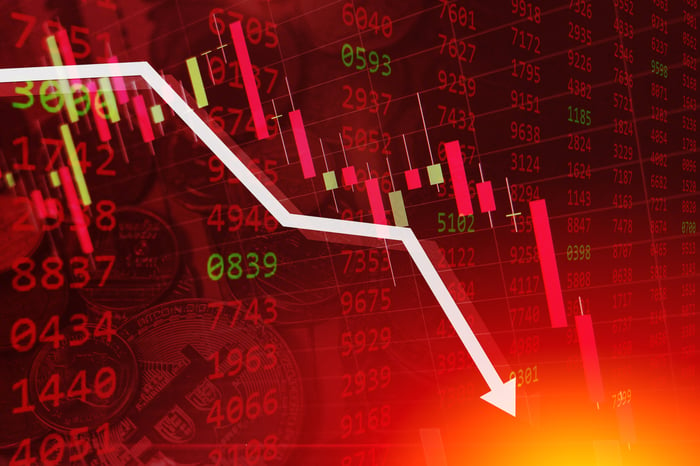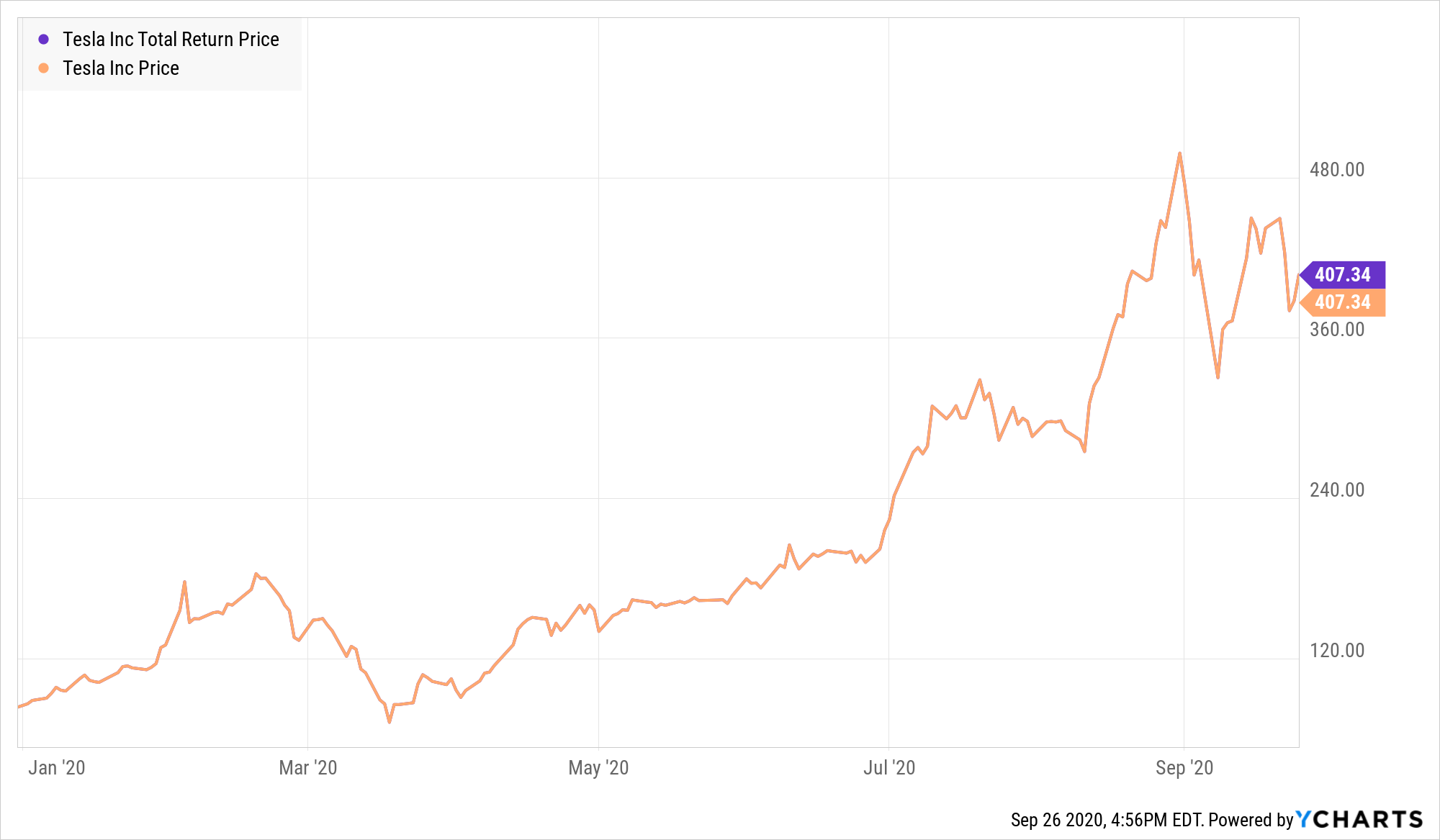On Sept. 1, 2020, Tesla (TSLA 1.85%) shocked the market.
Capitalizing on a stock rally that had driven Tesla shares up nearly six times in price since the start of the year, CEO Elon Musk had decided to cash in and grab some extra liquidity to finance the future development of new Tesla models, and more powerful car batteries to run them, by selling $5 billion worth of Tesla shares. Tesla shares promptly plunged, falling 34% over the course of the following week.

Image source: Getty Images.
"Buy the dip!" shouted the analysts.
After all, Tesla was the leader in electric cars, the wave of the future. "Battery Day" was on the horizon, and the EV-maker's stock would surely rally ahead of the event, as investors rushed aboard ahead of whatever wonderful things Elon Musk would say.
They were right about that ... until all of a sudden, they were wrong. Tesla shares resumed climbing through Sept. 22, when Battery Day arrived -- but then dipped 15% in two days when investors decided Tesla's news was insufficiently amazing.
TSLA Total Return Price data by YCharts
So is it safe to buy the dip now?
In the case of Tesla, it might be. As the undisputed leader in electric car sales, Tesla has defied the skeptics to post four consecutive profitable quarters, according to the latest data from S&P Global Market Intelligence.
Moreover, Tesla's stock chart this year really is a work of art. "Spikes" and "dips" notwithstanding, if you lay a ruler and draw a line from the stock price's nadir in late March through Tesla's closing price (post-most recent dip) Friday, it still shows an astoundingly positive incline -- meaning that investors who held the stock through thick and thin have been rewarded richly for their patience.
Point, counterpoint
But things don't always work out so well.
Take would-be Tesla competitor Nikola Corporation (NKLA 0.76%), for example. After merging with a blank check company in June, resulting in a de facto IPO, Nikola stock went supersonic, first tripling in value, then doubling again -- all in the space of a week. But Nikola's history since that first exhilarating week has been nothing but a series of dips -- and investors who bought those dips have been burned badly.
NKLA Total Return Price data by YCharts
Accusations that the company was "an intricate fraud" utilizing purchased technology and advertising itself with faked test drives devastated Nikola stock earlier this month, eventually costing company founder and chairman Trevor Milton his job last week. And while it's true that Tesla has had its own fair share of such near-death experiences -- and survived -- there's no guarantee that Nikola will do likewise.
Try to "buy the dip" on Nikola, and you could end up catching a falling knife instead.
What investors need to know
So ... how do you know that the stock you see "dipping" is a bargain that will bounce back, and not a knife that will cut you?
The simple answer is: You don't. Unless you work high up in the company itself, or have particular experience in and insight into the industry it works in, chances are you're going to be guessing just like the rest of us.
And in that case, I'd suggest that "buying the dip" might just as easily hurt you as help you.
What's a better way to invest? Consider dollar-cost averaging with your investments. If you want to own $1,000 worth of a stock for example, try buying $100 worth of stock every month, for 10 months (or $100 per quarter for two and a half years -- or any other period that strikes your fancy).
If your chosen stock continues dipping, then not investing all your money at once will buy you larger and larger numbers of shares with each purchase, so that if the stock does turn around eventually, your profits will be all the greater. On the other hand, if your stock turns around earlier than you had planned, or hoped, you'll at least not have missed the boat entirely. And your later investments will be in a company that is growing steadily healthier and more popular over time -- which is not at all a bad thing.
You won't know which way things will play out beforehand, of course, but your chances of profiting will improve either way.







